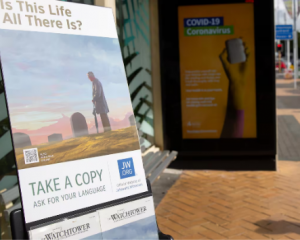Linda Dekker (27), a University of Otago graduate now working in London, told a British conference of the effectiveness of a drug in killing MRSA (methicillin resistant staphylococcus aureus).
Ms Dekker's mother, Monique, said last night she was very proud of her daughter, who had developed a strong interest in science while at St Kevins College in Oamaru.
"She's doing incredibly well. She is going to do her PhD now."
Ms Dekker, her two sisters and a brother, had grown up on dairy farms. Her parents now lived at Peebles. Her daughter "had milked a lot of cows" to pay for studies, Mrs Dekker said.
In New Zealand, the incidence of "superbug" infections has risen sharply in the past 20 years. Their treatment is far more complex and costly. Superbugs are a particular problem in hospitals.
In 2007, it was estimated there were 8000 cases of MRSA in New Zealand.
The golden staph can cause skin abscesses, post-operative wound infections and pneumonia and, through the toxins it produces, toxic shock syndrome.
Ms Dekker's group chemically joined a light-activated drug, tin chlorin e6, to a protein fragment. The protein fragment fits the shape of a molecule found on the surface of MRSA.
On its own, the drug, once exposed to light of the right frequency, can kill MRSA cells but, potentially, also human cells.
Its combination with the protein fragment puts it closer to the target cells and is expected to prevent it from harming human tissue.
"When attached to the protein fragment, it will kill just the bacteria, because it can attach to the bacteria and get closer to it, hence more localised killing," Ms Dekker said.
In laboratory tests, the combined drug killed almost 100% of MRSA cells and was vastly more effective than using the drug without the protein fragment. The protein fragment suppressed the bug's potentially lethal production of toxins.
"The results from laboratory studies are very encouraging and indicate that this technique might be effective at treating topical infections such as wound and burn infections."
It would need to be proven in animals before it could be considered for human clinical trials.
Group head Prof Sean Nair said they had developed light-activated therapy as a new way of killing superbugs. It had great potential.
The research presented by Ms Dekker was one of several potential MRSA treatments in which the group was involved. One was already in a clinical trial.
Auckland pathologist and clinical microbiologist Dr Arthur Morris said the study presented by Ms Dekker was an exciting development that could open up a new way of treating MRSA, one that was unlikely to be rapidly overtaken by increased resistance as the bug evolved.
- Additional reporting by Rebecca Fox.












